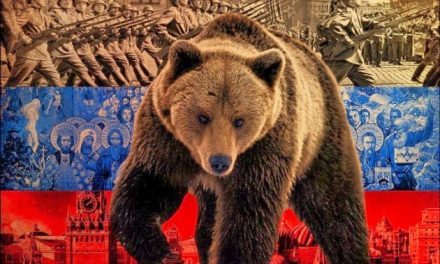By Andrei Tsygankov, Valdai Club
The Putin-Trump summit in Helsinki is necessary primarily to become an attempt to prevent a new escalation of the conflict between Russia and the United States. Today there are no conditions, trust and political will to promote a positive agenda in bilateral relations. The negative trend in the two countries’ relations has been too long and dangerous.
The upcoming summit meeting of the presidents of Russia and the United States in Helsinki is causing considerable resistance from the European, American and partly Russian establishment. Liberal elites in Europe and the US are afraid of further destruction of the “liberal” world order, which emerged after the Cold War. In Trump’s actions, they see willingness to abandon America’s allies and come close to “Putin’s Russia,” concluding deals beneficial for the American president and trampling the principles of liberal democracy and economic openness. In Russia, the criticism of attempts to get closer to Trump is connected with his internal political weakness and tough foreign policy, which has already caused quite a bit of criticism since the American bombing of Syria in April 2017. At the same time, critics often agree that Trump is a man of effects, who needs to demonstrate his “supernatural” abilities to negotiate with anyone, but is not ready for serious work on real partnership relations.
Since the initiative of the summit came largely from the White House, it is useful to re-evaluate the goals that guided Trump in seeking dialogue with the Kremlin. A year and a half into his inauguration, the US President feels confident enough to insist on the ideas he voiced during the 2016 election campaign. Then he appeared before the world as an economic nationalist, advocating the restoration of the American industrial power, trade protectionism and the active development of new markets, including the energy one. Everything else – commitments to the allies, WTO principles and global rules – is secondary. The main threats for Trump are China, the European Union and Iran: each of them in their own way impeding the implementation of the US economic goals. It is no coincidence that Trump’s main ideologist was Steve Bannon, who spoke out not only for toughening the migration policy, but also for abolishing the post-WWII Bretton Woods agreements.
In this world outlook, Russia was initially supposed to be a junior partner and a kind of battering ram to push the US agenda in relations with the EU, Iran and China. It was assumed that in exchange for lifting sanctions, the Kremlin would not oppose the pressure against Iran and China, and in the long term it would put up with the growing export of the American LNG to European markets and the United States’ domination as the world’s main military and economic power.
As we know, instead of repealing the previous sanctions, Trump supported the new ones under pressure of the US establishment. The US-Russian conflict, which escalated since the Ukrainian crisis, has reached an extraordinary heat point in the sphere of information and regional confrontation in Syria, Eastern Europe and other areas. A new nuclear arms race also appeared on the horizon.
The situation has changed, but what about the global goals of the White House? If nothing changed and the external effects hide the strategy, we can assume that Trump will seek opportunities to normalize relations with the Kremlin on a new basis, staring now from a lower base. He has already indicated his readiness to re-discuss the issue of Crimea, reducing Iran’s influence in Syria and the Middle East as a whole. The idea of a new Israeli-Palestinian settlement, not to mention the requirements for re-signing a nuclear deal, is also based on the idea of reducing Tehran’s influence. Russia almost got a proposal, he that hath ears to hear, let him hear. Let’s not forget about the Russian ram in making the NATO countries increase their defense budgets to 2% of GDP. Not all the Europeans are ready to face the “Russian threat” on their own and in the future will have to pay, investing, essentially in the development of the US military-industrial complex. It looks like a strategy, although it is too early to talk about the lifting of sanctions and China.
The problem for Trump lies in the fact that Putin and the Russian establishment are not ready for a radical breakdown of the largely tuned foreign policy. Russia is not ready to exert pressure on Iran, to make significant concessions in Syria, to stop supporting Donbass, to reduce energy-related activities in Europe, to accept US nuclear arrangements, or to reconsider relations with Beijing. Moreover, Trump’s internal political problems are far from over, and he is still perceived as an impulsive and unbalanced politician. The Kremlin remembers the symbolism of the Russian Consulate’s closure in San Francisco on the day of the new Russian ambassador’s arrival, Trump’s demands to “punish” Russia and Iran by bombing in Syria and much more.
Therefore, the meeting in Helsinki is necessary primarily to become an attempt to prevent a new escalation of the conflict between Russia and the United States. Today there are no conditions, trust and political will to promote a positive agenda in bilateral relations. The negative trend in the two countries’ relations has been too long and dangerous. Lifting sanctions, a new program of cooperation, or the beginning of the Helsinki Process-2 are perceived today as utopian ideas from the early 1990s.
However, the importance of the meeting should not be underestimated. It can help stop a dangerous trend and formulate an agenda in relations aimed at determining the scope of mutual non-interference and cooperation, preventing new conflicts. If a framework agreement on the danger of escalation is signed, this would be a huge step forward. Such an agreement could be the result of mutual understanding on the importance of non-interference in the internal politics of each other, the coordination of military actions in various regions and the study of extending the strategic arms treaty.


















